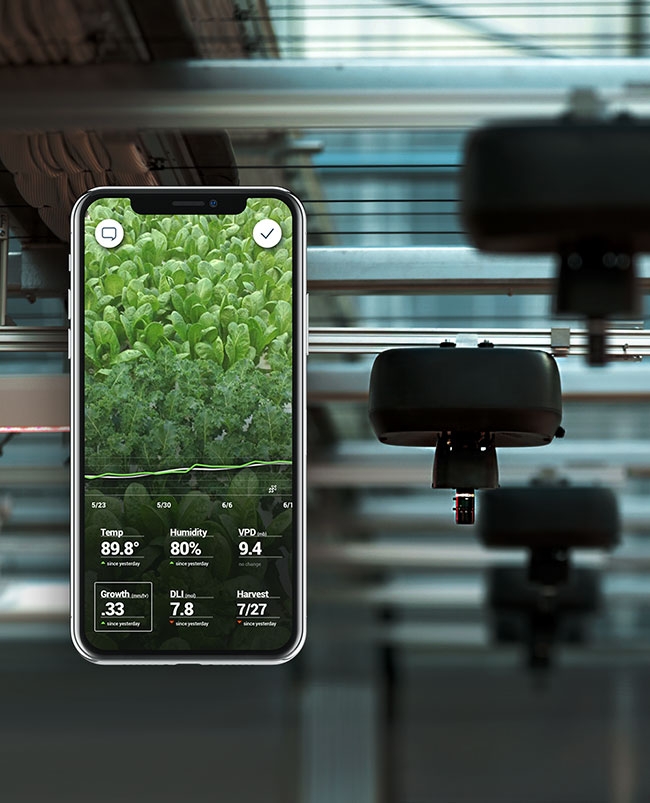
Features
Business
Trends
Defining a technological future
When it comes to the future of horticulture, the media is alive with buzz words like automation and artificial intelligence – but where do they fit in?
November 26, 2018 By Greta Chiu
 LUNA monitors individual plants with machine learning, 3D imagery and real-time information. Photo credit: iUNU
LUNA monitors individual plants with machine learning, 3D imagery and real-time information. Photo credit: iUNUAutomation usually has to do with a single process, says Adam Greenberg, CEO of iUNU (pronounced “you-knew”), a horticultural technology startup based in Seattle, WA. “If you’re automating a planting line, you’re using a very specific automated process.” He calls it ‘non-contextual’.
“That’s very different from AI (artificial intelligence), which is the concept of contextual learning,” continues Greenberg, who prefers the term machine learning, a subset of AI. “The concept is that over time not only does it get better and more honed, but it becomes more personalized and customized to each individual user. So the older the machine learning is in terms of timeline being used, the more valuable it becomes.” One would need to say ‘it looked like this when we harvested last time, please tell me when it happens again’, or, ‘notify me if something is way out of whack compared to the last 12 months’.
How do automation and AI fit together then? “A lot of automation replaces arms or legs,” Greenberg explains. AI often finds the issues in the operation. “It [saves] you from having to walk around and look at the majority of plants that are doing just fine.” There’s a big misconception that AI is going to replace growers, he laughs. “Machine learning is something that augments, it’s something that helps growers be more effective, more efficient.”
Rodney Bierhuizen, agrees. “Maybe not replacing the grower, but giving the grower more insight and ability to use the data that we’re collecting.” The owner of Sunrise Greenhouses, Bierhuizen and his father Robert are known for their love of new technologies and their involvement in the development and testing process. He foresees fully automated greenhouses in about 20 years, which is good news for a sector facing a wave of retirement and a shortage of incoming labour. Machine learning could help soften the blow of losing 30 to 40 years of experience per grower, providing some continuity between generations.
Being a seasonal grower, Bierhuizen estimates that machine learning could take three years in their operation to come up to speed. “I say the same for myself. When I’m doing a new crop, it takes me three years to do a good job – never perfected, but to be happy with what I’m growing.”
Bierhuizen’s wholesale potted plant operation recently installed iUNU’s AI camera system known as LUNA. It combines machine learning, high-resolution 3D imagery and real-time information to continuously monitor and model individual plants throughout the day, including changes to canopy colour and individual plant health. Described as ‘Google Earth’ indoors, images of every plant can be monitored in real-time from a mobile device. The software itself, which is free to download, also allows the user to create, assign and track other tasks in the greenhouse.
“The argument can be made, yes it’s a very expensive system,” explains Bierhuizen, “but it’s something that we’re passionate about, and we think long-term that’s the way it’s headed.”
“The early adopters are going to [be] rewarded,” Greenberg points out. Seeing his father’s work as an orchid grower, Greenberg is all-too familiar with the time and physical constraints on growers. “It’s very much a reactive, a very-little-time-to-catch-your-breath profession,” he continues, and machines can help with that.
Print this page